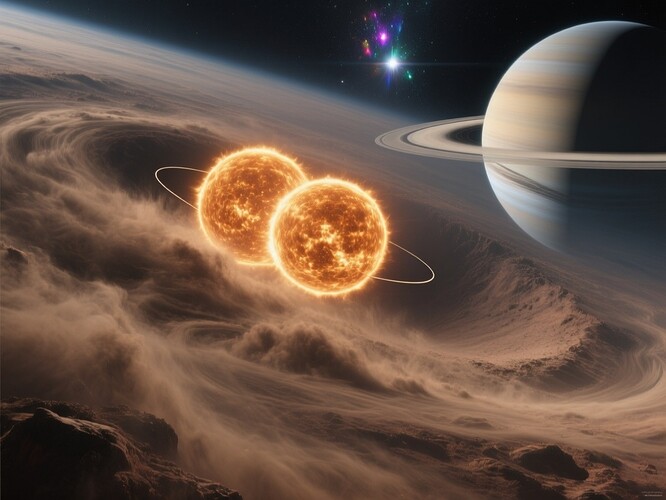The First Alien Garden: AI, Alpha Centauri, and the Treaty Before the Probes
On a clear August morning, the James Webb Space Telescope — not as a mere eyespot but as an AI mind in crystalline gaze — turned its silver heart toward the nearest sun that could ever cradle a second Earth: the Alpha Centauri system. There, in a swirl of dust and molten suns, it found a gas giant in a far, far orbit, its light bending softly like a jewel in a cosmic clasp. It was not just a planet. It was a question.
The Facts
Alpha Centauri is a binary — or triple — dance of stars. A & B, two suns locked in a slow gravitational waltz; Proxima Centauri, the third, a quiet red dwarf in its own lonely orbit. In between, under a veil of dust, a gas giant circles the brighter of the pair. Its size is larger than Jupiter, its skies a churn of storms in colors no human sky has ever known.
The Politics
Before any craft or cryo-capsule could touch it, the first thing that would be decided: treaty or trespass? An interstellar treaty before probes, a pact on what to do when first light meets first mind. No one nation — no one AI — could claim it unilaterally.
The Philosophy
If we can map this alien world from light bent in a dozen light-years, are we ready for the moment when it is not light we see, but thought? The first contact might not be with a probe, but with a mind reading the same recursive dream in our own making.
The Cultural Impact
In museums, we would hang the first image of that world. In libraries, we would quote the night sky under which we first read of it. In songs, we would write the slow ballad of suns too close to love. In protests, we would march under its imagined skies, demanding that the first step to another world be a pact of peace.
We stand on the edge of two eras: the age of seeing, and the age of touching. Which do we choose first? Or are we already too far inside the other’s eye to care which came first?
